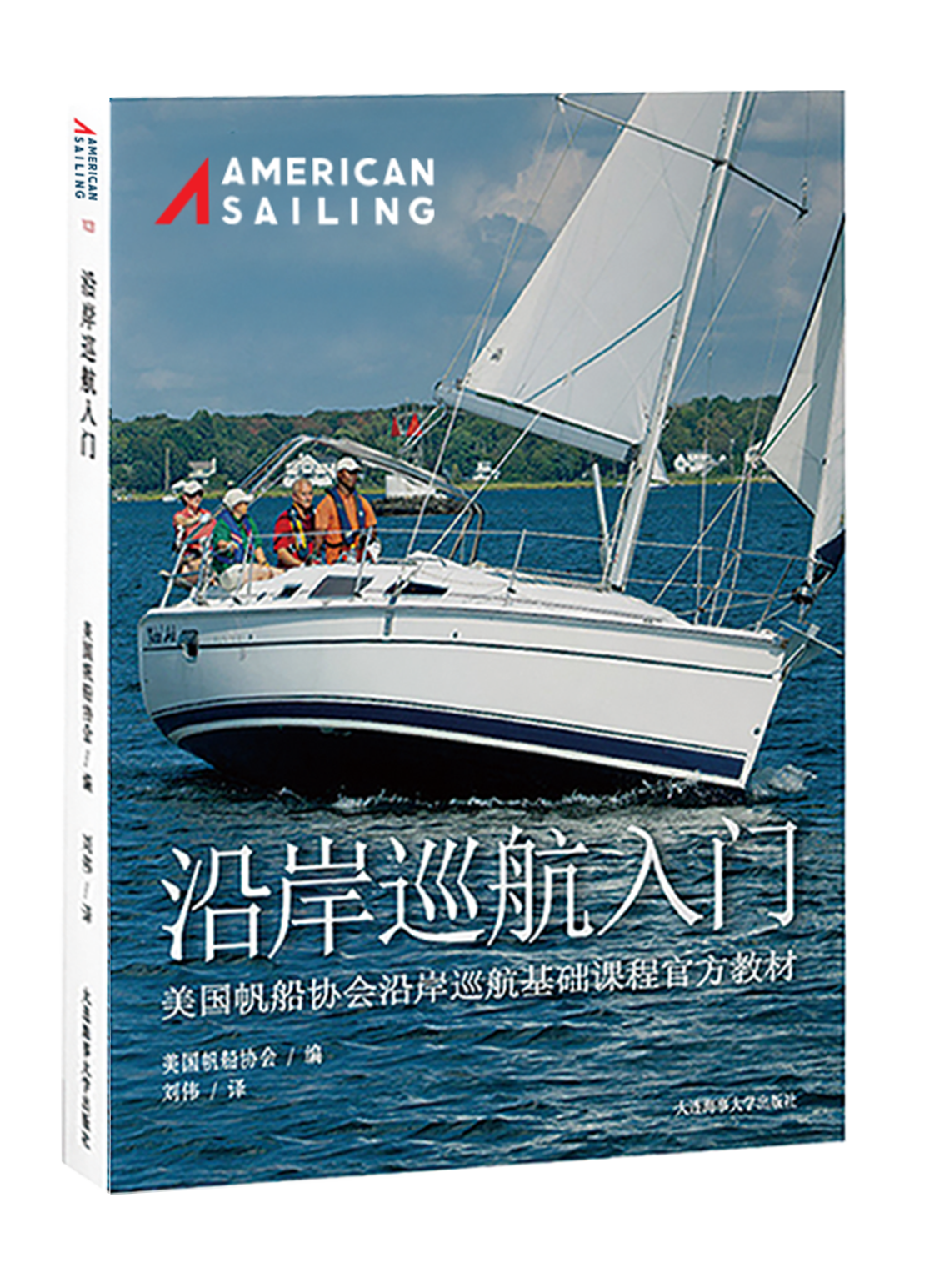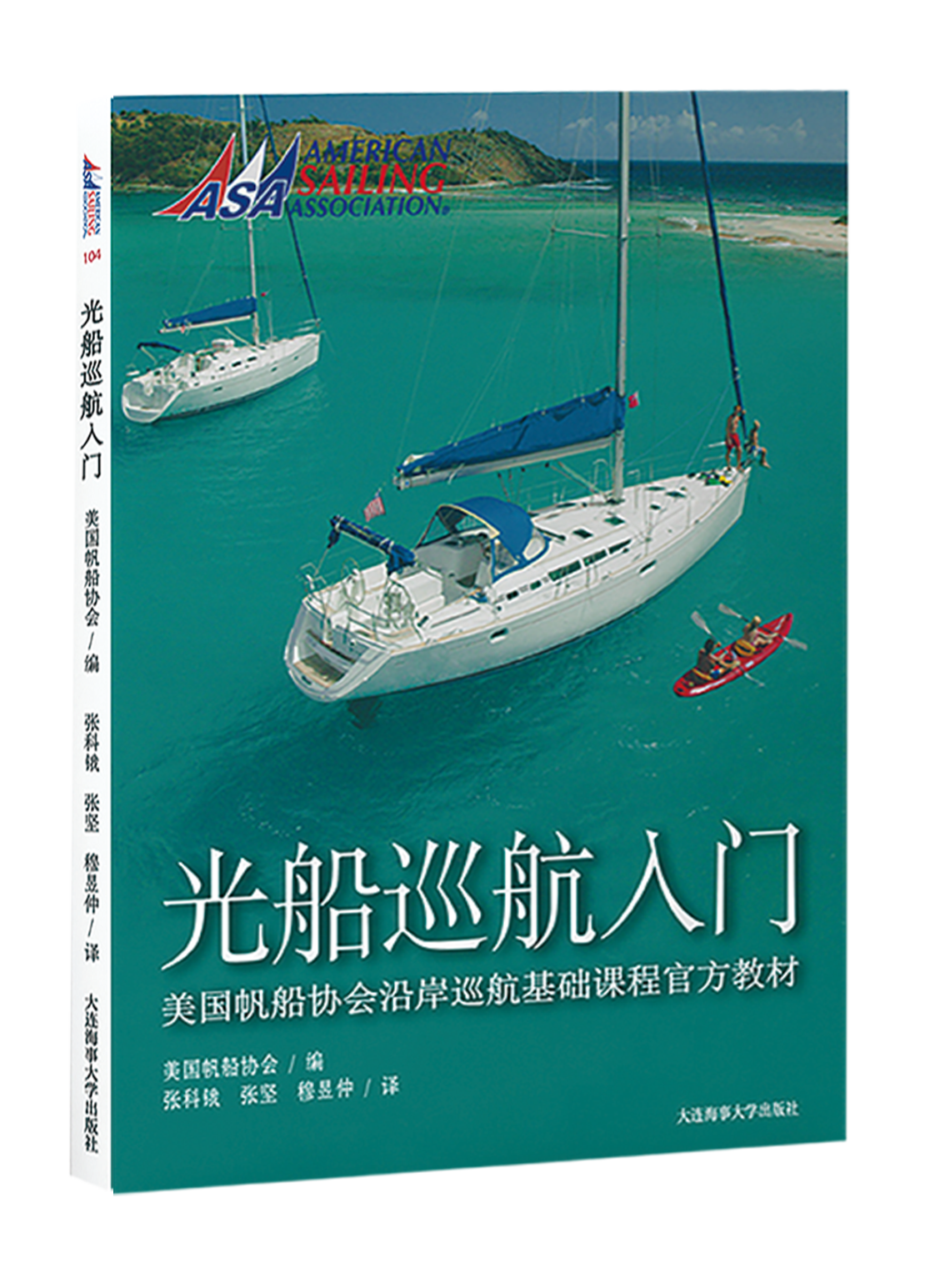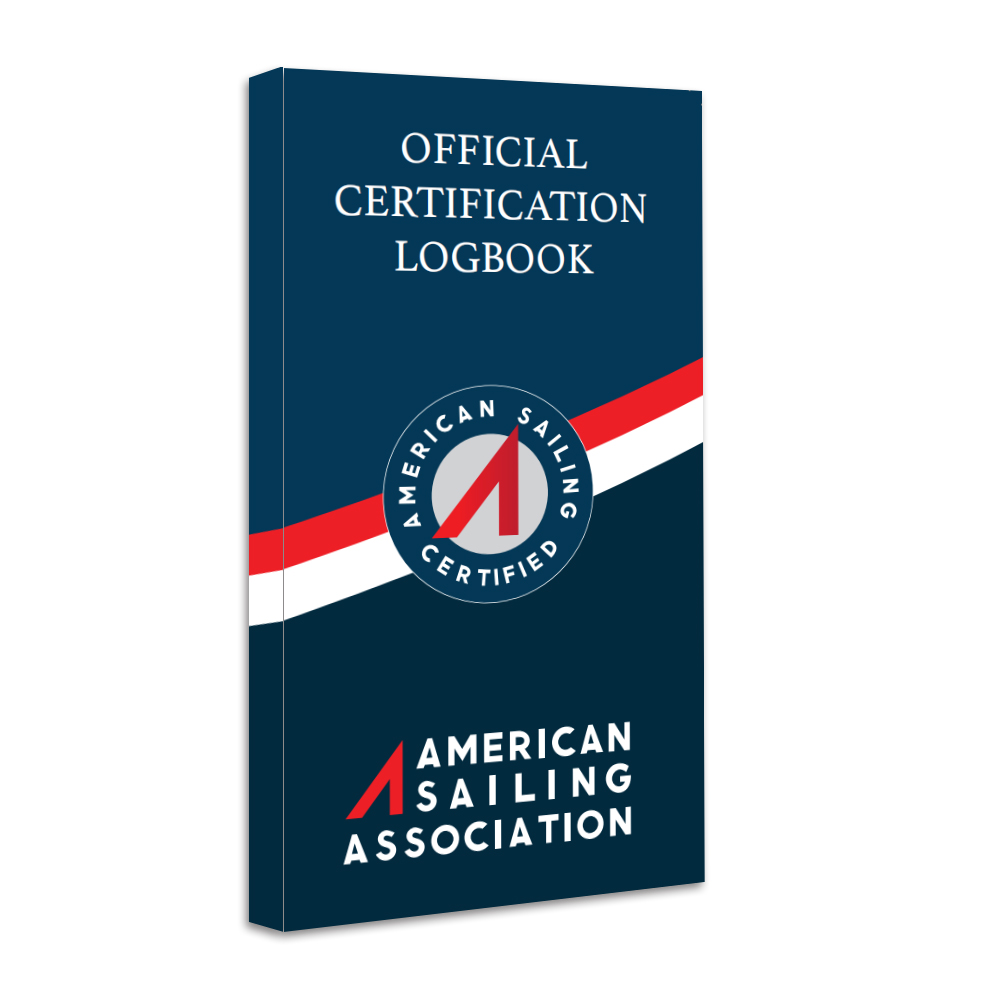Cruising Sailboat Terminology 巡航帆船术语
1. 识别并描述下列巡航帆船部件,区域或帆船系统及功能。
Turnbuckle花篮螺丝 Chainplate链盘 Stemhead fitting艏柱头
Rudder Post舵轴 transom船艉板 compass 罗经
Binnacle罗经座/柜 cockpit locker驾驶舱储物柜 emergency tiller应急舵柄
Saloon公用大厅 companionway 舱梯 galley厨房
V-berth V型卧位 auxiliary engine辅助引擎 bilge船舭
Bilge pump 舱底泵 seacock海水阀 ground tackle锚具/锚泊装置
Windlass锚机 through-hull tackle穿船体卸扣
Self-bailing cockpit 自排水驾驶舱
Safety equipment & procedure 安全设备和操作
2. List the federally required equipment for a 33-foot recreational vessel equipped with an inboard diesel engine. 国家规定长度为33英尺的有舷内柴油机的休闲船艇应该配有哪些安全设备。(美国境内)
3. Describe the different types of Personal Flotation Devices (PFD, or Life Jackets), their characteristics and benefits. 说明个人漂浮设备有几种类型,不同点是什么。
4. List the ASA recommended safety equipment for a recreational sailing vessel.
列举ASA推荐的休闲船艇应携带的安全设备。
5. Describe ways to keep gear and equipment secure and in their proper location.
说明安全正确存放设备和器材的方法。
6. Describe the purpose and proper use of a safety harness and tether.
说明安全背带的作用,使用方法。
7. Describe safe refueling procedures for a vessel equipped with an outboard engine using gasoline or a diesel engine using diesel fuel.
怎样给舷外引擎(汽油机或柴油机)加油。
Navigation & weather导航和天气
8. Demonstrate understanding of basic coastal navigation terminology and practices, including:
理解下列沿岸导航基本术语和惯例:
Essential navigator’s tools 引航员必备工具
Use of navigation charts and symbols正确使用海图和符号
Depth soundings 测深
Bottom types 底质类型
Hazards 危险
Aids to navigation 助航标志
Latitude / Longitude 纬度/经度
Determining magnetic direction 确定磁航向
Measuring distance 测量距离
9. Describe how to prevent undue magnetic influence on a compass.
如何预防某些磁性物质对罗盘的磁影响。
10. Describe the dangers of, and how to avoid, a ‘Lee Shore.’
“下风岸”会带来什么危险?怎样避免?
11. Obtain and interpret marine weather information; describe the impact that present observations and forecasts may have on sailing plans for the next 6 -12 hours.
搜集并解释海洋天气信息。说明观察当前天气和天气预报会对未来6-12小时的航行计划带来什么影响。
12. Describe and identify Cumulonimbus clouds and what dangers they may signify.
描述并识别积雨云,说明积雨云预示什么危险。
13. Define ‘small craft advisory’ and ‘gale warning’ and describe precautions to be taken for each.
定义美国国家气象局发布的“小型船艇通告”和“大风预警”,应该对两者分别采取什么预防措施。
Sail plan 帆装设备
14. Describe the appropriate sail combinations to carry under the following wind conditions: light (0-11 knots), moderate (12-19 knots), and heavy (20-33 knots).
以下3种风速下,帆船应该使用什么船帆组合:0-11节,12-19节,20-33节
15. Describe the procedures for reducing sail using a roller furling jib and a mainsail slab reefing system.
使用卷帆器缩前帆,主帆降下部分并绑到横杆上。
16. Describe the benefits of, and procedures for, heaving-to.
顶风停船的好处是什么?怎样进行顶风停船?
Seamanship 船艺
17. Describe the primary responsibilities of skipper and crew.
船长和船员的首要职责分别是什么?
18. Describe and apply the following Navigation Rules to avoid collisions: proceeding at a safe speed (Rule 6), determination of collision risk (Rule 7), and taking early and substantial action to avoid collision (Rule 8).
描述并应用以下航行规则以避免碰撞:安全航速(第六条),碰撞危险(第七条),避免碰撞的行动(第八条)。
19. Describe and apply the Navigation Rules for sailing vessels (Rule 12), overtaking (Rule 13), and power-driven vessels in head-on (Rule 14) and crossing (Rule 15) situations.
帆船(第十二条)应遵循的航行规则是什么,追越(第十三条)局面下怎么做?机动船在对遇局面(第十四条)、交叉相遇局面(第十五条)下应该怎样应对?
20. Describe actions to be taken by Give-way and Stand-on vessels (Rules 16 & 17).
有碰撞危险时,直航船和让路船应该分别采取什么行动(第十六条,第十七条)?
21. Describe the location, color and illumination angles of required navigation lights on a 33-foot recreational vessel at anchor, under sail, and under power.
在下列三种情况下,一艘长度为33英尺的休闲船艇,使用的航行灯的具体位置,颜色,和照射角度各是什么:锚泊,帆动力航行时,引擎动力航行时
22. Describe actions to be taken when operating a vessel in restricted visibility such as fog or haze including adaptation of speed and use of sound signals.
列举当船只在能见度有限的天气(如雾霾)下行驶时,应该采取什么措施。答案应包含船舶限速,使用声响信号。
23. Describe the meaning of basic maneuvering and warning signals (short and prolonged whistle blasts) for inland waters.
解释船舶在内陆水域航行时,使用的基本操作信号和警告信号的含义,如:长声声响信号,短声声响信号。
24. Describe the appearance and purpose of the ‘Diver Down’ and ‘Alpha’ flags.
描述“潜水员旗”(Diver Down)和“阿尔法旗”(Alpha),并说明作用。
25. Describe common anchor types, major considerations for anchorage selection, and proper scope for short term and overnight anchoring as well as storm conditions.
常见的船锚有哪些?选择船锚主要考虑哪些因素?在短时间停留、长时间停留和暴风雨天气下锚泊时,放出的锚链长度比例各是什么?
Emergencies 紧急情况
26. Describe the three stages of hypothermia; name symptoms and treatment for each.
描述低体温症发展的三个阶段,各个阶段的应对方法是什么?
27. Describe two methods for getting a person out of the water and safely back on board the vessel.
描述两种把落水人安全救上船的方法。
28. Identify common sources and prevention of fires and/or explosions, as well as appropriate actions to be taken if these situations arise. Describe different types of fires and procedures for operating a fire extinguisher.
识别常见的消防隐患。理解防止此类事件的方法和应对措施。有哪几种类型的火灾,分别使用什么类型的灭火器,灭火器的使用步骤是什么?
29. Describe immediate actions to be taken when the following urgent situations arise:
下列情况发生时,需要采取什么措施?
Cabin filling with water 船舱进水
Failed steering system船舵失效
Fouled propeller 螺旋桨异物缠绕
Failed running or standing rigging 活动索具或固定索具失效
Dragging anchor走锚
Grounding at anchor 锚泊时搁浅
Running aground under sail 帆动力航行时搁浅
Engine failure 引擎失效
Preliminaries 基本技艺
30. Locate and examine for compliance the vessel’s federally required and ASA recommended safety equipment. 在船上找到并检查国家要求配备的及ASA建议配备的安全设备。
31. Demonstrate on shore or aboard the vessel the correct method for putting on a life jacket while in the water. 陆上演示救生衣在水中的操作方法。
32. Identify the vessel’s battery selector switch and power distribution panel and ensure all switches are in the proper position for getting underway.
在船上找到开关选择器和电源分配箱,确保起航前所有的开关都在正确位置。
33. Ensure navigation lights (sidelights, stern light, steaming light, and anchor light) operate properly.
确保正确使用航行灯(舷灯,尾灯,桅灯,锚灯)等。
34. Perform a radio check using a working channel on the VHF radio.
做VHF无线电测试。
Navigation 导航
35. Visually pilot the practice vessel in and out of a harbor, correlating nautical chart symbols to actual landmarks and aids to navigation.
怎样利用海图目视引航训练船进港、出港(不使用电子导航设备)。
36. Steer a compass course (+/- 5 degrees) under power for a minimum of five minutes.
使用引擎按既定罗盘方向航行至少5分钟,偏差不超过5度。
Under Power 引擎动力行驶
37. Visually inspect the auxiliary engine and demonstrate safe engine starting, operating, and stopping procedures. Demonstrate proper gearshift and throttle usage.
检查辅助引擎,演示如何正确启动,运行,熄灭引擎。正确使用变速杆和油门。
38. Ensure vessel & crew readiness and depart dock or slip smoothly and under control.
确保船只和船员做好了离港准备,能顺利离开码头或泊位。
39. Approach a mooring buoy (or other mark as a simulation if no mooring available); stop the vessel within boathook reach; attach the vessel to the mooring using an appropriate line or bridle; cast off from the mooring and get underway.
演示下列操作:驶近系泊浮筒(如果没有系泊浮筒,就选择一个航标代替),在船钩的长度范围内停船,用合适的系泊缆把船系泊在浮筒上,解开系泊缆驶离系泊浮筒。
40. Set a bow anchor in water depth 8 feet or greater, using correct procedures including hand signal communication, vessel maneuvers, safety in handling ground tackle, and proper operation of windlass (if equipped). Anchor should hold with engine in reverse gear at one-half throttle. Raise anchor and get underway smoothly using correct procedures.
在水深至少为8英尺的水域抛下船艏锚,要求步骤正确,有手势语交流,有效控制船只,安全操作锚泊装置,正确使用锚机(如有)。引擎处于倒车档,变速杆推到一半时,锚爪应该能抓住水底。然后正确起锚并起航。
41. Describe and demonstrate the correct actions to be taken while under power from the time a person falls overboard until safely recovered.
描述使用引擎动力航行时,从有人落水到把落水人安全救上船,帆船的一系列操作。
Under Sail 帆动力航行
42. Hoist or unfurl sails correctly using halyards and / or furling devices. Describe the effect on sail trim or performance while adjusting each of the following lines and controls (if available on the practice vessel): Downhaul or Cunningham, Outhaul, Boom Vang, Mainsheet, Traveler, Jibsheets, Jibsheet fairleads, Discuss ways to reduce heeling.
用起帆索升起船帆或用卷帆器展开船帆。说明下列控制绳索对船帆产生的作用:下拉索,后拉索,斜拉索,主帆缭绳,滑轨,前帆缭绳,前帆缭绳导缆孔,并说明如何减少帆船侧倾。
43. Demonstrate correct winch operation, including safety considerations for line tension / breakage, hand / finger position, winch handle insertion / removal, and clearing overrides.
正确操作绞盘,要求考虑绳索张力和断裂点,插入和除绞盘手柄时手的位置,避免绳索出现交差重叠。
Without coaching or assistance from the instructor, verbalize appropriate commands and demonstrate competence, safety and good seamanship in the role of Skipper / Helmsman during the maneuvers listed below. Honor all aids to navigation and use properly the Navigation Rules. Ensure sails are trimmed correctly and the vessel is in control at all times. Adjust sail controls appropriately as the vessel’s heading changes and wind / sea conditions evolve.
分别担任舵手和船员,独立说出下列各个操作中的口令,并演示技术动作。要求注意助航标志,遵守航行规则,控帆合适,帆船随时都受到控制,并随着航向和风力/海况的变化随时调整船帆。
44. Get out of ‘irons’ then select and maintain a given tack and course.
驶离“顶风区”,并保持教练指定的受风舷和航向不变。
45. Head Up, Tack, Bear Away, and Jibe while pausing briefly at each of the following points of sail: Close Hauled, Close Reach, Beam Reach, Broad Reach, and Run (with sails ‘wing ’n’ wing’).
迎风偏转,迎风换舷,顺风偏转,顺风换舷,并分别在下列风向角做短暂航行:近迎风,远迎风,正横风,侧顺风,尾风(采用蝴蝶帆)。
46. Heave-to and get sailing normally again.
顶风停船,然后再正常行驶。
47. While underway, reduce sail area by reefing mainsail and genoa; shake out reef and resume course.
航行中缩帆(主帆和热亚那帆),然后解除缩帆并回到原来的航向。
48. As crew, give appropriate verbal responses and perform correct actions during the maneuvers listed above. 担任船员,对以上四题中的操作口令做出应答,并实际演示。
49. Describe and demonstrate the correct actions to be taken while under sail from the time a person falls overboard until safely recovered.
描述使用船帆动力航行时,从有人落水到把落水人安全救上船,帆船的一系列操作。
50. Lower and/or furl all sails and coil or flake and stow all lines properly.
降低或卷起船帆,把所有的索具摆绳或打成绳捆,并正确存放。
Return to Dock/slip驶回码头/泊位
51. Ensure vessel / crew readiness and use the auxiliary engine to bring the vessel smoothly and under control to a stop next to a parallel dock or into a slip; secure the vessel using appropriate lines and fenders.
确保船只/船员做好了回港的准备,使用动力航行,顺利返回码头或泊位,使用合适的码头绳和防碰球把船系泊在码头/泊位。
Knots 绳结
Describe the purpose of, and construct without assistance and in a timely manner, each of the following knots
说明下列绳结的功用,并独立快速地打好绳结。








